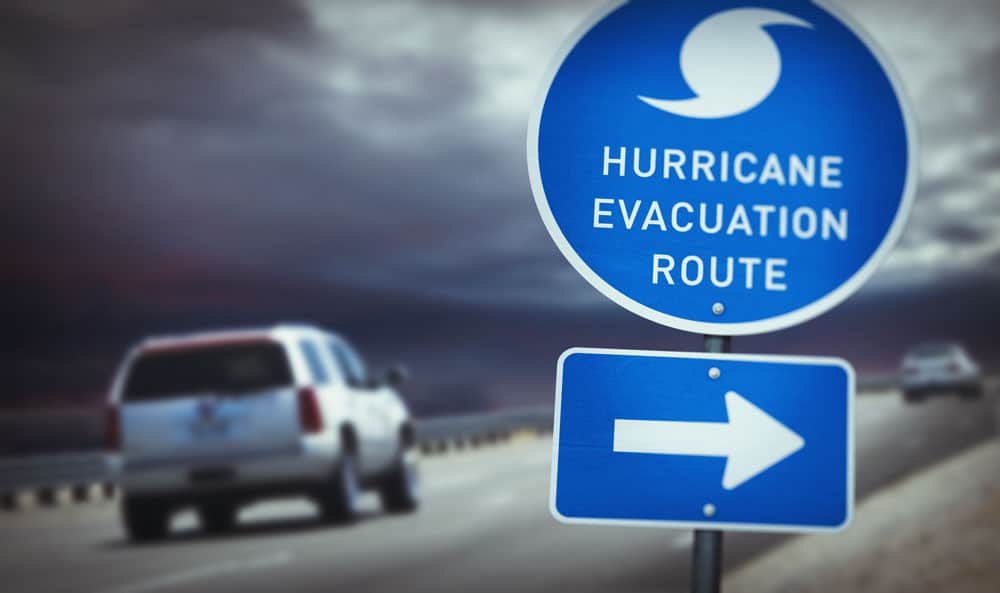The 2017 hurricane season brought attention to a glaringly obvious fact: businesses, communities, and individuals in the United States need to do more to prepare themselves for these types of catastrophic disasters. The effects of the natural disasters that struck the country in 2017 were devastating.
According to The Washington Post, the hurricanes that rocked the country affected close to 50 million people spread across three broad geographical areas: the Caribbean, the West and the South. The United States also had to grapple with wildfires and other natural disasters that challenged and depleted the resources of federal agencies, like FEMA, who are designed to mobilize during these times.
If there’s one thing that the 2017 hurricane season made abundantly clear, it’s that government agencies shouldn’t be relied upon to do the bulk of the heavy lifting when it comes to responding to national disasters. In spite of their best intentions and preparations within the agency itself, FEMA and other entities quickly become overwhelmed with the size, scale, and scope of the hurricane season. Besides, their job is to try to save as many lives as possible with business interests coming in a distant second.
What Businesses Can Do
Weathering the unknown which is the end result of a hurricane or other natural disaster begin long beforehand with being prepared. For a business, of course, this preparation goes far beyond simply getting its employees to safety, the resources and data that the business relies on to run must also be protected.
Protect Business Continuity
The first step in protecting business continuity is to formulate a plan. While one portion of this involves knowing the hurricane routes if an evacuation is ordered and boarding up windows, an effective strategy that protects your business extends to all of its aspects.
Identify those applications and the essential data that are critical to your business’ mission. Consider offsite data storage, the relocation of end users and identification of remote equipment, end users and access to any networking equipment. Formulate a hierarchy of key personnel, as well as those beyond them in the event they aren’t available.
A key element is that this plan shouldn’t be hastily thrown together as a hurricane is approaching. For the most comprehensive results, start planning early and continue to revisit the plan at regular intervals in the event that something has changed. Develop a planning team that’s comprised of key employees and test the plan with them. Do this by planning drills, mock disasters and training.
Many businesses lack the time and/or knowledge to implement a real-world business continuity planning strategy. Here, the services of a crisis management consultant could prove to be invaluable. These professionals work with businesses to tailor storm preparedness strategies that meet their unique needs and assist with their implementation.
Protect Your Data
Without access to your business’ data, it will be nearly impossible to function. At the very least, productivity will flag considerably as employees attempt to recreate records by hand. Ensure that your business data is backed up regularly. This backed up data should be stored in a facility that is secure, dependable and out of the immediate area. Consider using an alternative storage site that allows you to access your data immediately via remote channels. Doing so eliminates the quandary of physically having to transport your data elsewhere as a hurricane approaches.
Prepare to Operate Off-Site
If your business is located in a disaster zone, it’s likely that the authorities may close the roads leading to it or they may be flooded. In other cases, employees might be unable to travel there. One way to mitigate the impacts of a hurricane is to develop a plan that enables your business to operate on a remote basis. Depending on your business model, this could be limited only to its critical functions or it could encompass most operations.
The key is to arm employees with the necessary tools to accomplish this and then practice them early. Tap into the many software solutions that are available for use on laptops to emulate your business’ functions in a remote location. In the event that employees must evacuate, discuss procedures for finances, hotel rooms, airline flights and related items long before a hurricane approaches.
Implement Plans Early
In addition to planning, preparing and practicing well in advance of the approach of a hurricane, it’s important to implement those procedures earlier rather than later. Don’t wait to declare your business’ emergency status until the final moments. Early declaration provides more time for the protection of employees and other business resources.
Communicate, Communicate, Communicate
Communicate is a vital component of any business. When a natural disaster looms, it becomes imperative. The first step, though, is to communicate your business’ disaster plan with those employees outside the planning team. Inform each employee of their role should a hurricane strike. Practice these roles often so they become second nature.
The second component is to establish backup communication plans that comprise several different options. Be aware that hurricane-force winds might knock out the capabilities of cell phone towers. Walkie-talkies and point-to-point private lines are two options that could be utilized during the time leading up the hurricane as well as during its aftermath.
Thirdly, communicate with government agencies about your plans and the preparations your business has made. Inform your local government when and if your business shuts down and everyone leaves the facility. The reason for keeping local governments in the loop is twofold. You don’t want them wasting precious resources on attempting to gain access to your business in their search for people who need help. On the other hand, you do want law enforcement and other officials to be aware that your site is empty so they know if they see any activity there that it should be considered suspicious.
The 2017 hurricane season was an eye-opener for many businesses. It really brought home the realization that businesses must work in conjunction with government agencies, not rely on them completely. For many businesses, disaster preparedness involves components that are beyond their scope of knowledge and skills. Partnering with a professional crisis consultant provides a business with an objective plan for continuity and survival.
Can we help you?
Our experts at Bryghtpath have built, implemented, and managed the crisis management processes used by many Fortune 100 firms, as well as small to medium enterprises around the globe. Learn more about our approach to Crisis Management in our Ultimate Guide to Crisis Management.
We’d love to talk with you about how you can leverage our experiences and knowledge to improve your organization’s resilience.
Drop us a note via our contact page or give us a call at +1.612.235.6435. We’d love to help!


 Lessons in Crisis Communications: Deepwater Horizon
Lessons in Crisis Communications: Deepwater Horizon